Federals Encounter Missouri State Guard Pickets
Tour Stop
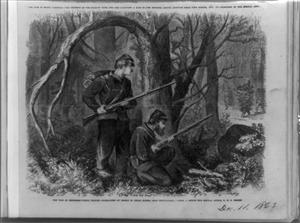
Directions: Because the area where Marmaduke deployed his pickets is on private property, this tour stop [ Waypoint = N38 57.627 W92 38.766 ] is located on the Rocheport Road near the area where the Missouri State Guard pickets were located in 1861.
- From the previous tour stop (Federal Disembarkment), continue driving west on Rocheport Road.
- After traveling about 0.2 miles, find a safe place to pull to the side of the road.
- You should be close to the intersection of Rocheport Road and Merna Drive.
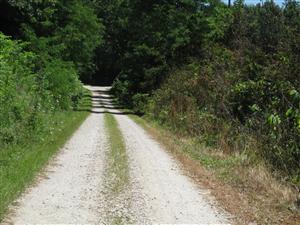 |
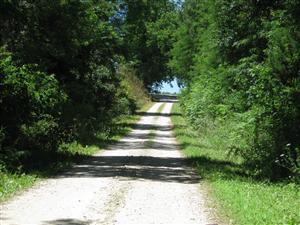 |
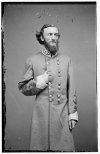
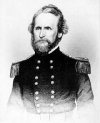
Description: If you look to the east down the Rocheport Road, you can get some sense of what the Missouri State Guard Pickets were seeing while they lay in wait for the Federal troops that they knew were marching towards Boonville. Knowing the Federals would come up Rocheport Road, Marmaduke deployed his pickets on a north/south line near this point.
After taking his regiment east from Camp Bacon, Missouri State Guard Colonel John S. Marmaduke deployed a picket line along the Rocheport Road on the bluffs overlooking the Missouri River bottom land. Marmaduke would establish his main line of defense about one mile west of his pickets. After disembarking his troops onto the south shore of the Missouri River, Union Brigadier-General Nathaniel Lyon sent out a skirmish line straddling the road to Boonville. The skirmishers were Companies A and B under, commanded of Major Peter J. Osterhaus, from the Second Missouri Volunteer Infantry Regiment.
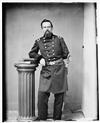 The two companies went about one and a half miles when the skirmish line encountered Marmaduke's pickets. Lyon described his movements in his official report: [35]
The two companies went about one and a half miles when the skirmish line encountered Marmaduke's pickets. Lyon described his movements in his official report: [35]
“After about two miles' march we met an advanced party of the rebel forces, which opened fire upon us, but soon fell back. To meet this resistance, the skirmishers already forward were collected to the right of our road. Company B, Second Infantry, was thrown out to the left, and opened fire. Two pieces of Captain Totten's battery were brought into play, and several shots fired. In advancing from this point, Lieutenant Lothrop, with a company of artillery recruits, Captain Yates' Company H, Missouri Volunteers, and one additional company from the Third Missouri Volunteers, were thrown forward to the right of the road, and in line with our advance.”
The following description of these events came from an eyewitness account reported in the Missouri Democrat newspaper: [36]
[The Federals] “... disembarked on the south shore, where the bottom-land between the river and the bluffs is some mile and a half wide. No traitors were visible there, and the troops at once took the river road for [Boonville]. Following this road somewhat over a mile and a half to where it ascends the bluffs, several shots from our scouts announced the driving in of the enemy's pickets.”
Harper's Weekly published the following account from one of their correspondents describing the initial contact at the Battle of Boonville: [37]
“At just three minutes before seven A.M., on June 17, the order was given to move. The morning was cloudy, with occasionally a few drops of rain, but before the battle was over the sun shone out clear and bright as ever. As the column ascended the bluff the pickets of the enemy were seen and driven in.”
